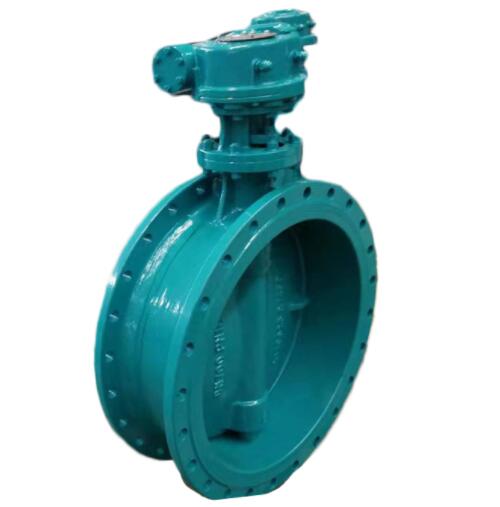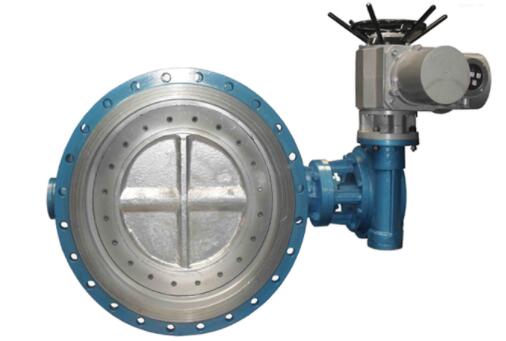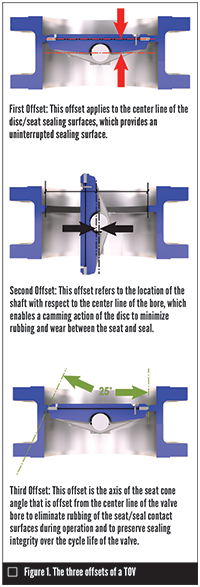May. 12, 2022
In recent years, metal-seated eccentric butterfly valves have competed with more traditional industrial valves like the globe and ball valves for critical applications. However, even though lots of people already know how a butterfly valve works, much of the confusion lies in how such eccentric valves differ and what applications are suitable for each.
In this article, you are going to walk through the differences between these two kinds of butterfly valves to guide you when choosing a suitable industrial valve for your application.
Double-offset valves feature have two offset stems that offer especially long life due to reduced contact between valve, discs, and seats, and are known as high-performance butterfly valves. If your operations involve high pressures and particulate fluids, this type of valve can be especially useful. Apart from triple-offset butterfly valves, they are one of the most widely available eccentric-type butterfly valves on the market. They are also known as the “elite” type of butterfly valves.
When compared to zero offset butterfly valves, double offset butterfly valves can withstand higher pressures. They’re made of Hastelloy, stainless steel, carbon steel, and other materials with ANSI Class ratings of up to 600. Their rigid Polytetrafluoroethylene (PTFE) seats (ANSI class 3000 butterfly valve) are usually made of Teflon and come in Fire Safe designs with metal seats as backups.
A two-offset disc can be used up to 1,480 psi [10 MPa] in double-offset butterfly valves. Unlike the single-offset design, the stem of the double-offset butterfly valve is located behind the disc. The second offset stem is pushed to one side from the middle of the disc in the high-performance butterfly valve. Because of the offset geometry, the disc can be rubbed over the seat with only 1° to 3° of 90° rotation. The cone profile while sealing the valve is the action of the double offset butterfly valve. The configuration of the disc and shaft offsets creates the cam action of the disc in the seat, which reduces the torque required to operate the valve.

Double Offset Butterfly Valve
With the triple offset butterfly valve there are three offsets. Two are placed in a similar position to the double offset butterfly valve, while the third offset is the geometry of the seating surface, creating a type of cone shape of the disc and seat. This cone angle, along with the two eccentric shaft offsets, allows the disc to seal against the seat with no friction.
This seat design also allows for uniform sealing, and thus a tight shutoff in a metal seat design. This design is a lower cost, lower torque option (easier to automate), than alternative style metal seated valves.
Triple offsets are generally used in applications similar to gate valves, where a metal seat is required, and tight shutoff and/or quarter turn actuation is desired. Applications like high pressure steam (over 150 PSI), superheated- steam, high temperature gases and oils, high temperature applications are good for this type of valve because a metal seat is required over a soft seat.
The triple offset valve is used in similar industries as the double offset butterfly valve, but in more demanding applications.

Triple Offset Butterfly Valve
| Description | Double Offset Butterfly Valve | Triple Offset Butterfly Valve |
| Seat Material | Soft Material | Metal Seat |
| Sensitivity to Pressure and Temperature Fluctuations | Yes | No |
| Seat Friction | Low | Very Low |
| Class Rating | 600 | 600 |
| Applications | Process On/Off Throttling | Critical and Severe Applications |
| Seat Lifetime | Long | Very Long |
| Fluide Services | Clean | Dirty |
| Bubble Tight Off | Yes | Yes |
| Pressure Drop | Highest | Highest |
| Cost | Moderate | Highest |
One of the main differences between these two butterfly valves is how they look. In the double offset butterfly valve, the two offsets of this kind of valve allow for easy opening yet retains its strong sealing power.
The offset of the disc can be found in two areas:
1. Slightly on the right side of the valve centerline
2. Slightly near the center of the valve body where the stem is attached to the disc.
The first offset offers continuous sealing whereas the second offset allows the valve to open with little friction, increasing its life service.
On the other hand, the triple offset butterfly valve is called as such because it has three offsets located in three different positions. These can be best understood if you check out the image below.
1. The center of the disc and seat
2. In the centerline of the bore and attached to the stem
3. The offset is in centerline of the valve where it becomes the axis of the seat cone angle.

The angled position of the disc in relation to the seats minimizes seat damage as well as preserve the integrity of the sealing surface. Additionally, it also reduces the chances of the valve sticking to the seats and it lowers operating torque.
Commonly, double offset butterfly valve seats are made of plastic or elastomeric material like PTFE. To use this kind of valve in high-temperature applications, the metal seat design is utilized but this needs to meet standard specifications of API 607.
Double offset butterfly valves are can reach pressure ratings up to ANSI Class 600. These can be made from carbon steel, stainless steel or Hastelloy with an elastomeric material such as Teflon.
The nature of media with which these valves operate dictates what materials to use for the valves. Triple offset butterfly valves deal with corrosive media so the valve often has metal seats made from high-grade materials such as stainless steel or duplex steel.
The triple offset butterfly valve can also have double seat type design, that is, an elastomeric or graphite material covers a stainless steel seat. Often, the seats of this valve are field replaceable. This should only be employed in cases where media is not abrasive or has a high temperature.
As it is eccentric, the double offset butterfly valve disc moves away from the disc as it begins to open. To have an effective bubble-tight seal, this valve utilizes line pressure that acts against the disc.
The triple offset type does not act like a typical butterfly valve which, with a turn of a lever, moves sideways to allow entry of media, like a waving of a hand. The triple offset type acts like a globe valve where the disc moves somewhat like a cone, moving upwards to downwards.
When the cone moves to become a circle, a tight seal happens. There is no drag when the seat takes contact with the disc because of the angled alignment of the disc in relation to the seat.
Double offset butterfly valves can often be found in large underground water applications. You can often see these valves with gate valves since both operate in the same. These are best used when you need to have the highest degree of tight sealing.
Often, you can find double offset butterfly valves in oil and gas applications, HVAC, waste and wastewater treatment facilities and Shipbuilding factories.
Triple offset butterfly valves are efficient in applications that have special challenges such as the abrasive material, high pressure or temperature and even those that are prone to fugitive emissions.
You would find triple offset butterfly valves in applications such as steam with over 150 psi or high-temperature pure gas or liquid. In cases like these, the metal seat types without the soft coating are more economical.
These valves are often used in industries such as oil and gas processing, refining, chemical and petrochemical applications, power generation, offshore applications, pulp and paper, and so on.
Between the double offset and the triple offset butterfly valve, if your primary concern is to have bubble-tight sealing, choose the double eccentric butterfly valve. If the application is highly corrosive, abrasive or deals with high pressure and temperature, the triple eccentric butterfly valve is worth considering.
If you have any further questions, don’t hesitate to contact us! Our valve team has about 20 years of experience and is happy to help!